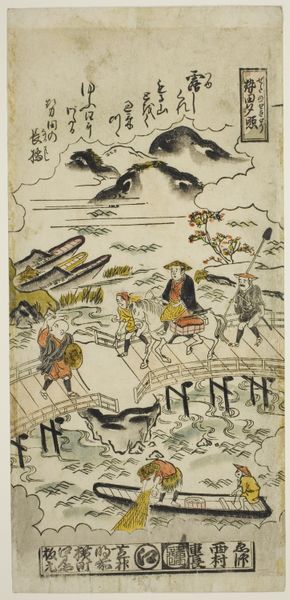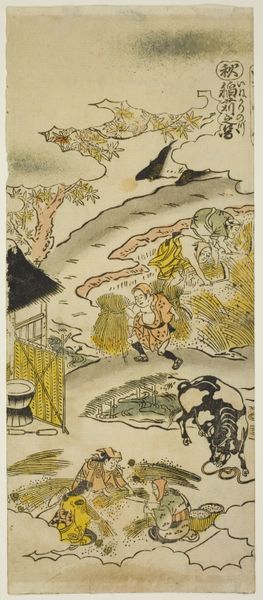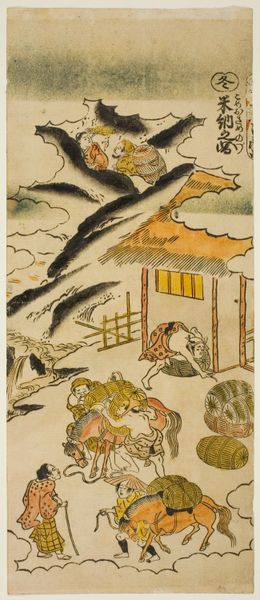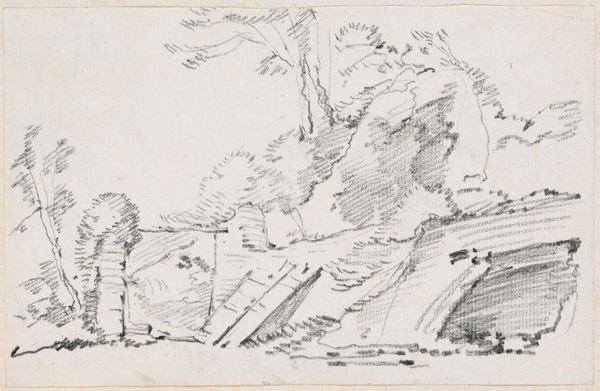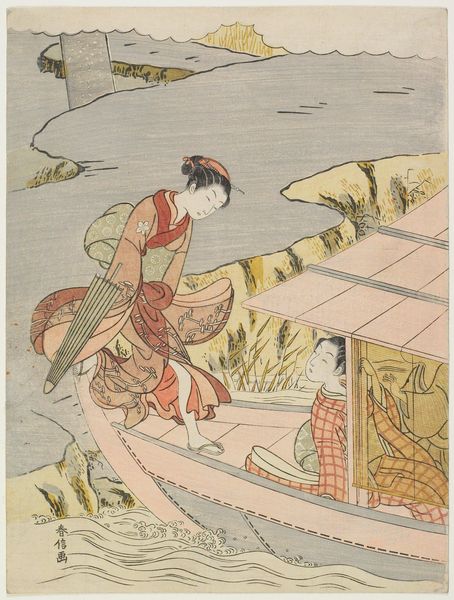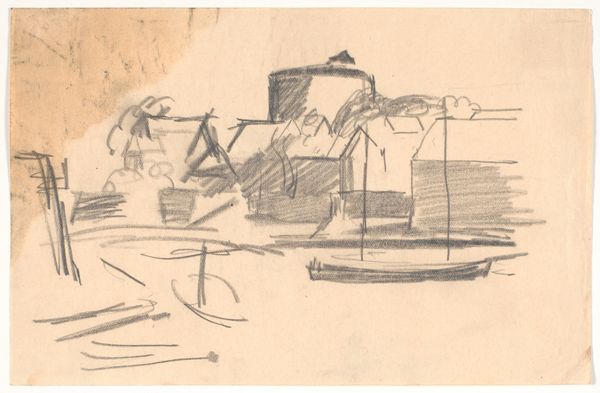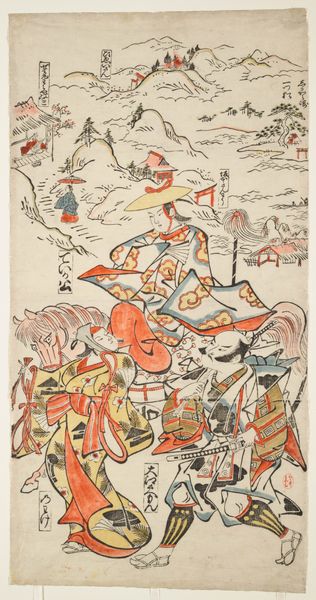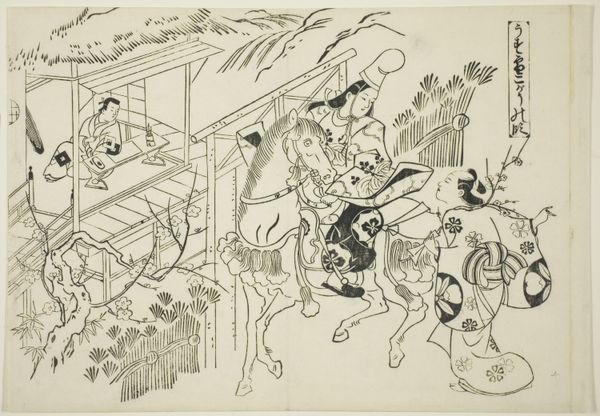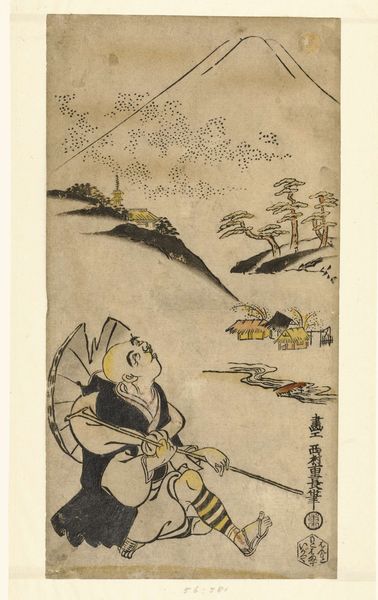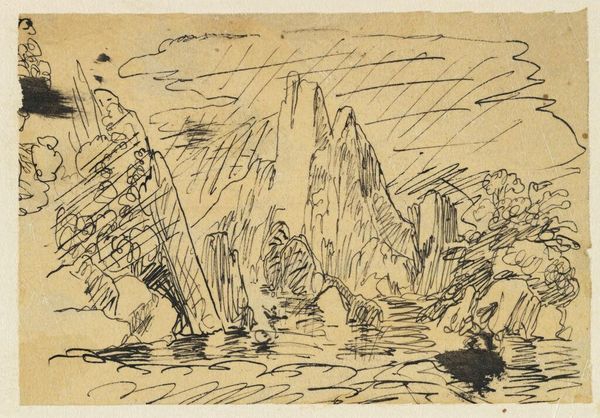
print, woodblock-print
#
narrative-art
# print
#
asian-art
#
landscape
#
ukiyo-e
#
figuration
#
woodblock-print
Dimensions: 12 1/2 x 6 1/8 in. (31.8 x 15.6 cm)
Copyright: Public Domain
Curator: Let's discuss "Night Rain at Karasaki," a woodblock print made sometime between 1700 and 1733 by Torii Kiyomasu II. It’s a striking example of ukiyo-e landscape art. Editor: My first impression is how dynamic the composition feels, despite the rather limited color palette. The diagonal rain lines really energize the scene, and the stylized figures add to the drama. It's both simple and highly evocative. Curator: Precisely. Rain often serves as a visual metaphor, cleansing the landscape, but here, the figures walking resolutely forward suggest resilience. This aligns with the broader theme of ukiyo-e prints portraying the everyday life and cultural values of the Edo period. Editor: Notice how Kiyomasu employs stark contrasts to direct the viewer’s eye. The dark figures in the foreground pop against the pale, blurred background. The rhythmic repetition of lines—the rain, the waves— creates a compelling sense of movement and depth despite the flattened perspective. Curator: The pine tree beside the shrine in the distance has an important symbolism. Pine is known as a sacred tree in the East, representing longevity, steadfastness, and even virtue in some cultures. The way the people appear so small, but move forward without pause is remarkable! Editor: Indeed, the subdued hues draw attention to the line work, enhancing the image's stark elegance. What I find truly fascinating is Kiyomasu’s skillful integration of text within the composition. It doesn't merely serve as a title, but integrates visually into the artwork's fabric. Curator: The inscriptions often added layers of meaning, referencing poetry, literature, or cultural nuances relevant to the intended audience. They act as further insight for viewers already familiar with these cultural symbols. Editor: Looking at the tonal variations and expressive lines in such a work deepens one’s engagement and respect. The very essence of printmaking seems so intentional. Curator: Right! Understanding that each mark and character carries an enormous amount of historic symbolism and visual interest for audiences of all kinds truly lets it still stand alone centuries later. Editor: Considering that this piece resides in the Metropolitan Museum of Art allows viewers an in-depth connection to a cultural phenomenon.
Comments
No comments
Be the first to comment and join the conversation on the ultimate creative platform.
